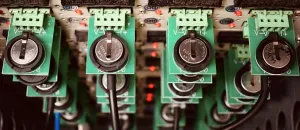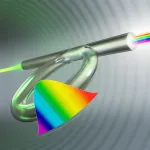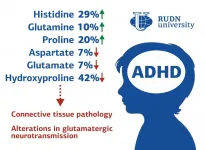(Press-News.org) HOUSTON ? Preclinical research from The University of Texas MD Anderson Cancer Center finds that although glioblastoma stem cells (GSCs) can be targeted by natural killer (NK) cells, they are able to evade immune attack by releasing the TFG-β signaling protein, which blocks NK cell activity. Deleting the TFG-β receptor in NK cells, however, rendered them resistant to this immune suppression and enabled their anti-tumor activity.
The findings, published today in the Journal of Clinical Investigation, suggest that engineering NK cells to resist immune suppression may be a feasible path toward using NK cell-based immunotherapies for treating glioblastoma.
"There is tremendous interest in utilizing immunotherapy to improve treatments for patients with glioblastoma, but there has been limited success to date," said senior author Katy Rezvani, M.D., Ph.D., professor of Stem Cell Transplantation & Cellular Therapy. "We were able to overcome the immunosuppressive environment in the brain by genetically engineering NK cells, which were then able to eliminate the tumor-regenerating GSCs. We are encouraged by these early results and hope to apply similar strategies to explore NK cell therapies in additional solid tumor types."
Glioblastoma is the most common and aggressive form of primary brain tumor in adults. Current treatments are only effective for a short time, with recurrences driven largely by small populations of therapy-resistant GSCs. Therefore, developing new treatments that can effectively target GSCs is necessary.
Published data suggests that NK cells may be capable of targeting GCSs, but it was unclear whether the stem cells would indeed be susceptible to NK-cell killing, Rezvani explained. Therefore, her team designed the study to evaluate how effective NK cells may be against GSCs.
Rezvani and her research team have worked to advance NK cells as a cancer therapy with the support of MD Anderson's Moon Shots Program®, a collaborative effort to rapidly develop scientific discoveries into meaningful clinical advances that save patients' lives. The current work was supported by the adoptive cell therapy platform and the Glioblastoma Moon Shot®, in collaboration with Frederick Lang, M.D., chair of Neurosurgery, and Amy Heimberger, M.D., now at Northwestern University Feinberg School of Medicine.
The researchers first confirmed that NK cells could target GSCs in vitro. Non-edited NK cells from healthy donors were able to eliminate patient-derived GSCs, whereas normal brain cells, called astrocytes, were unaffected.
To explore whether NK cells are able to cross the blood-brain barrier to infiltrate brain tumors, the team examined tumor samples removed during surgery. Glioblastoma samples contained high numbers of tumor-infiltrating NK (TI-NK) cells. However, isolated TI-NK cells were unable to kill GCSs in vitro, suggesting that NK cells were suppressed in the brain.
The researchers next profiled TI-NK cells to study their level of activity using protein markers and single-cell RNA sequencing. TI-NK cells displayed signals of inhibitory responses and immune suppression relative to NK cells isolated from the blood of healthy donors.
The single-cell analysis also revealed an activation of the TGF-β signaling pathway in TI-NK cells, identifying this as a potential mechanism of immune suppression. Indeed, blocking TGF-β signaling with various inhibitors prevented GSCs from activating this pathway in NK cells and suppressing NK cell activity.
The study went on to clarify that GSCs produce TGF-β in response to direct cell-cell contact with NK cells, a process regulated by αν integrin proteins. TGF-β released by GSCs activates its corresponding receptor on NK cells, TGFBR2, to block their anti-tumor activity.
Using an in vivo model of patient-derived GSCs, the researchers showed that combining donor-derived, or allogeneic, NK cells with inhibitors targeting either αν integrins or TGF-β receptors improved tumor control relative to untreated controls.
More impressive were the results using allogeneic NK cells with TGFBR2 genetically removed. Treatment with these gene-edited NK cells resulted in a significant improvement in overall survival relative to untreated controls or treatment with unedited NK cells.
"These findings support a combinatorial approach of NK cell-based immunotherapy together with disruption of the TGF-β signaling axis to overcome the immune defenses of GSCs in the brain," Rezvani said. "Based on these findings, we are working to launch a clinical trial evaluating this experimental approach as a novel treatment for glioblastoma."
INFORMATION:
In addition to the Moon Shots Program, this research was supported by Ann and Clarence Cazalot Jr., the Dr. Marnie Rose Foundation, the Specialized Program of Research Excellence (SPORE) in Brain Cancer (P50CA127001) and the National Institutes of Health (NIH) (CA016672; CA120813; P30CA16672). A full list of collaborating authors and their disclosures can be found with the paper here.
The energy density of traditional lithium-ion batteries is approaching a saturation point that cannot meet the demands of the future - for example in electric vehicles. Lithium metal batteries can provide double the energy per unit weight when compared to lithium-ion batteries. The biggest challenge, hindering its application, is the formation of lithium dendrites, small, needle-like structures, similar to stalagmites in a dripstone cave, over the lithium metal anode. These dendrites often continue to grow until they pierce the separator membrane, causing the battery to short-circuit and ultimately destroying ...
Nitrogen from agriculture, vehicle emissions and industry is endangering butterflies in Switzerland. The element is deposited in the soil via the air and has an impact on vegetation - to the detriment of the butterflies, as researchers at the University of Basel have discovered.
More than half of butterfly species in Switzerland are considered to be at risk or potentially at risk. Usually, the search for causes focuses on intensive agriculture, pesticide use and climate change. A research team led by Professor Valentin Amrhein from the University of Basel, however, has been investigating another factor - the depositing ...
Living beings are continuously exposed to harmful agents, both exogenous (ultraviolet radiation, polluting gases, etc.) and endogenous (secondary products of cellular metabolism) that can affect DNA integrity. That's why cells are endowed with a series of molecular mechanisms whose purpose is to identify and signpost possible damage to the genetic material for speedy repair. These mechanisms are precisely regulated because they are key to cell survival. In extreme situations of massive and irreparable damage, cells enter a phase of controlled dismantling called "programmed cell death". Among the events that take place during this process is the massive delivery to the cytoplasm of a mitochondrial protein called cytochrome C. Under homeostatic conditions, this protein plays a role in energy ...
The 2018 Nobel Prize in Physics was shared by researchers who pioneered a technique to create ultrashort, yet extremely high-energy laser pulses at the University of Rochester.
Now researchers at the University's Institute of Optics have produced those same high-powered pulses--known as chirped pulses--in a way that works even with relatively low-quality, inexpensive equipment. The new work could pave the way for:
Better high-capacity telecommunication systems
Improved astrophysical calibrations used to find exoplanets
Even more accurate atomic clocks
Precise devices for measuring chemical contaminants in the atmosphere
In a paper in Optica, the researchers describe the first demonstration ...
Peatlands are an important ecosystem that contribute to the regulation of the atmospheric carbon cycle. A multidisciplinary group of researchers, led by the University of Helsinki, investigated the climate response of a permafrost peatland located in Russia during the past 3,000 years. Unexpectedly, the group found that a cool climate period, which resulted in the formation of permafrost in northern peatlands, had a positive, or warming, effect on the climate.
The period studied, which began 3,000 years ago, is known as a climate period of cooling temperatures. The climate-related effect of permafrost formation brought about by the cooling was investigated particularly by analysing the ancient plant communities of the peatland, using similarly analysed peatland data from elsewhere in ...
An international survey by the University of Münster's Cluster of Excellence "Religion and Politics" provides the first empirical evidence of an identity-related political cleavage of European societies that has resulted in the emergence of two entrenched camps of substantial size. "We see two distinct groups with opposing positions, which we call 'Defenders' and 'Explorers'", says psychologist Mitja Back, spokesperson of the interdisciplinary research team that conducted the most comprehensive survey of identity conflicts in Europe to date. "Who belongs to our country, who threatens whom, who is disadvantaged? Across all such questions of identity, the initial analyses of the survey reveal a new line of conflict between the two groups, which have almost diametrically opposite ...
RUDN University doctors found alterations in serum amino acid profile in children with attention deficit hyperactivity disorder (ADHD). The findings will help to understand the mechanism of the disorder and develop new treatment strategies. The study is published in the journal Biomedical Reports.
Attention deficit hyperactivity disorder (ADHD) is a neurodevelopmental disorder that manifests itself in childhood. Children with ADHD find it difficult to concentrate and manage their impulsivity. It is known that ADHD is also manifested at the neurochemical level -- for example, the work of dopamine and norepinephrine is disrupted. However, there is still no definitive data ...
The death of a mother is a traumatic event for immature offspring in species in which mothers provide prolonged maternal care, such as in long-lived mammals, including humans. Orphan mammals die earlier and have less offspring compared with non-orphans, but how these losses arise remains under debate. Clinical studies on humans and captive studies on animals show that infants whose mothers die when they are young are exposed to chronic stress throughout their lives. However, such chronic stress, which has deleterious consequences on health, can be reduced or even cancelled if human orphans are placed in foster families young enough. How stressed orphans are in the wild and whether ...
Testicular cancer is the most common cancer among men under 40 in Europe and the USA. National statistics from the Cancer League indicate 471 new cases and 12 deaths in Switzerland. In general, the prospects for successful treatment of testicular cancer are good over time and, especially with early diagnosis, even further improved. Even if metastases are already present, testicular cancer can be successfully treated with appropriate therapy in the majority of cases.
New classification enables even more targeted treatment
The primary treatment for testicular cancer is the removal of the affected testicle. However, the disease is often only discovered at a stage where metastases are already present and then, after the primary surgical procedure, ...
Modelling the financial system as a network is a precondition to understanding and managing challenges of great relevance for society, including the containment of financial crises and the transition to a low-carbon economy.
Financial Networks is the scientific discipline that deals with these issues. An article published in the scientific journal Nature Review Physics carries out the first comprehensive review of this exciting interdisciplinary field. By covering over 250 studies across domains, the paper is also a call for researchers in all scientific disciplines to consider the insights from the financial network models, because of their implications for citizens, public agencies and governments. Professor Guido Caldarelli from Ca' Foscari University of Venice coordinated ...









